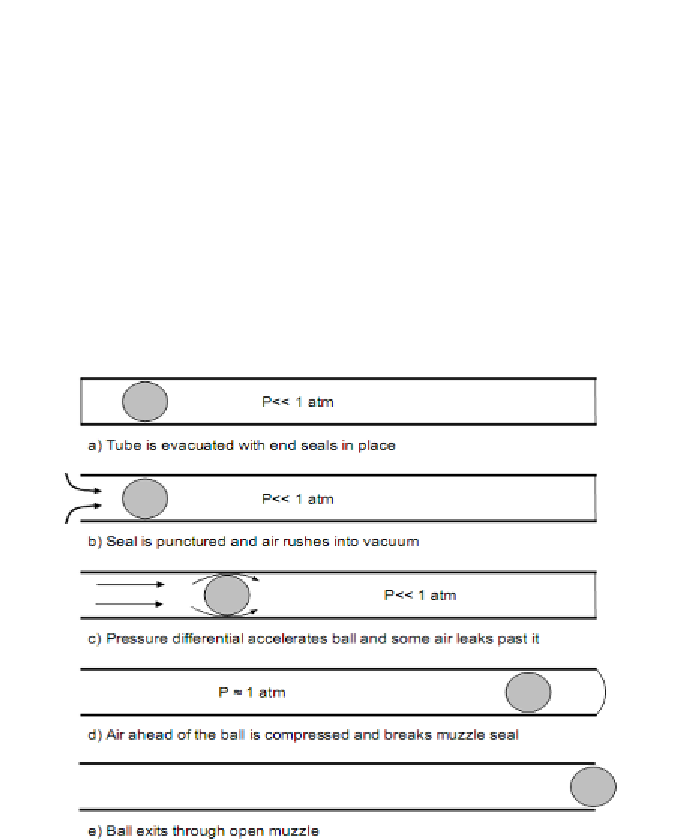Biomedical Engineering Reference
In-Depth Information
barrel (Figure 19). Air at atmospheric pressure rushes in through the now open
end of the tube, driving the ball ahead of it. A moving ball normally slows
quickly because of aerodynamic drag, but there is no air ahead of the ball.
Thus, it accelerates quickly along the tube. The inner diameter of the tube is
slightly larger than the outer diameter of the ball, so a small amount of air slips
past the ball as it accelerates toward the muzzle. When it reaches the muzzle,
the small air charge is compressed between the oncoming ball and the seal,
and the resulting pressure increase ruptures the seal. The ball then exits
through the unobstructed muzzle.
Figure 20 shows high-speed video images of a typical firing sequence.
The three frames are immediately before impact of the ball with an aluminium
target, at the point of impact, and immediately after impact. The frames were
taken 1/1000 second apart with an exposure time of 1/4000 second.
Reproduced with permission. Copyright retained by Inderscience Publishers.
Figure 19. Mechanics of Firing the Moving Sphere.
The second frame shows the ball emerging from the target, and the third
frame shows the tape in motion toward the target. The breech and muzzle seals
are marked with different colored permanent markers so that the tape
fragments can be identified after a fired shot.

